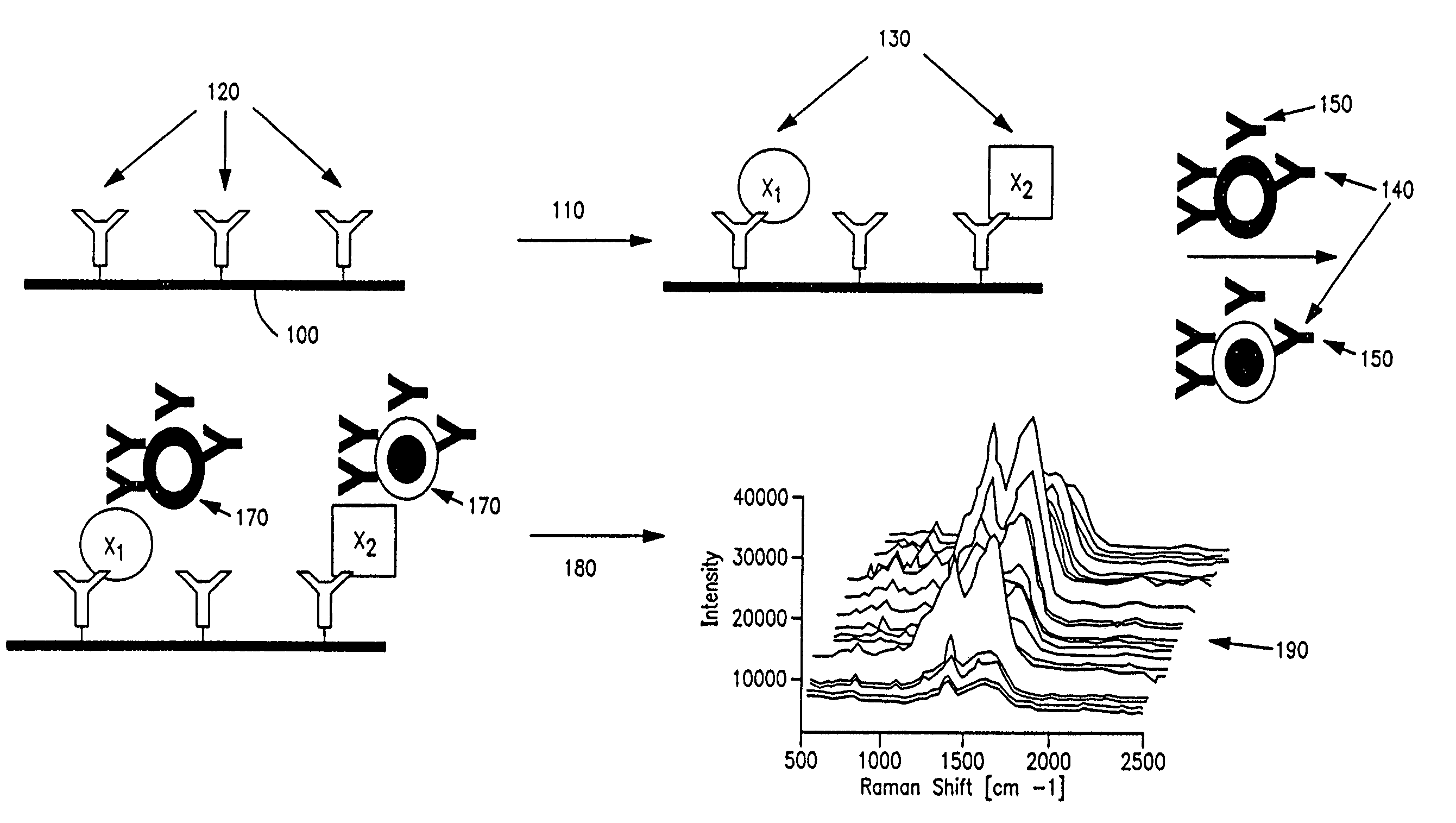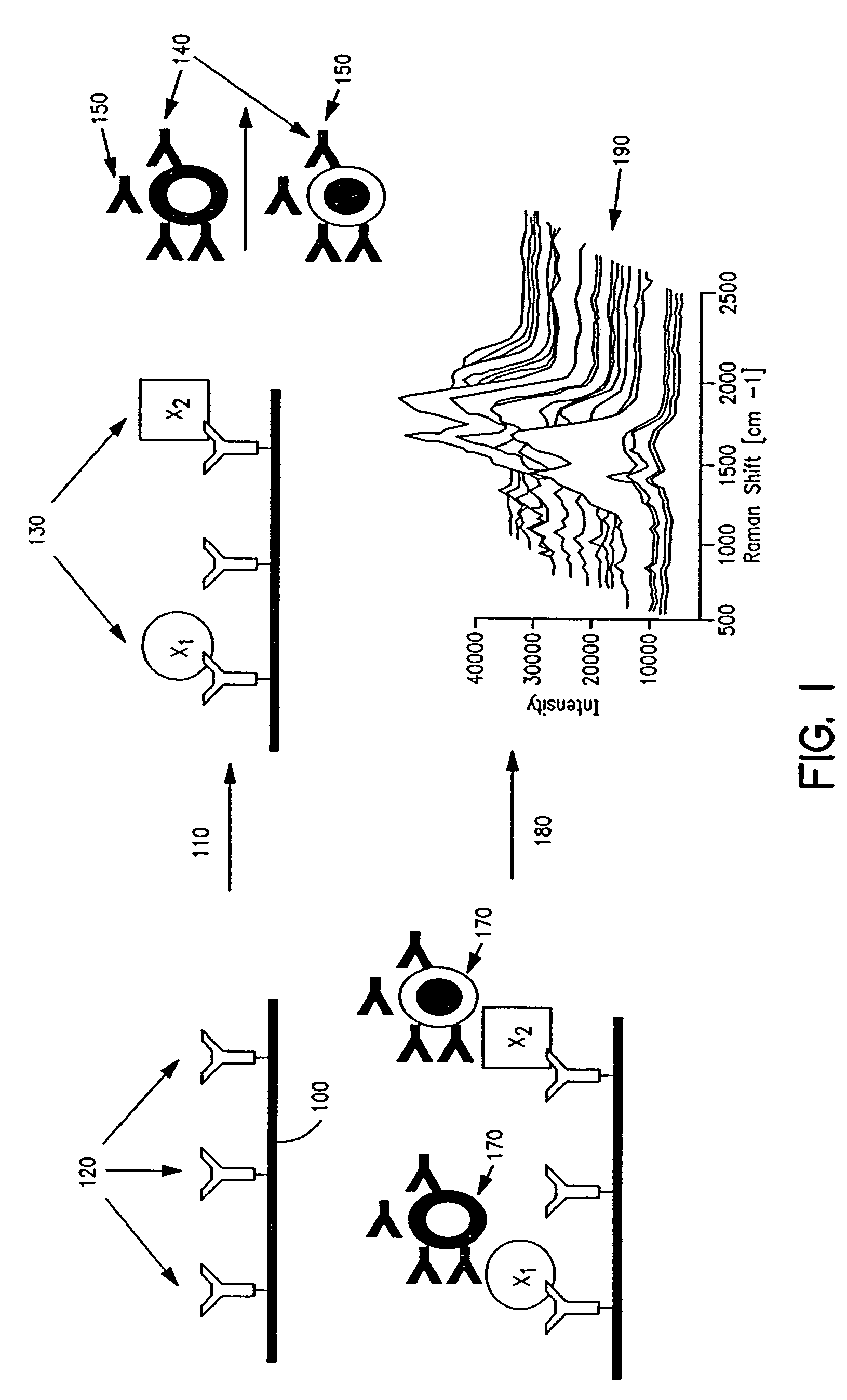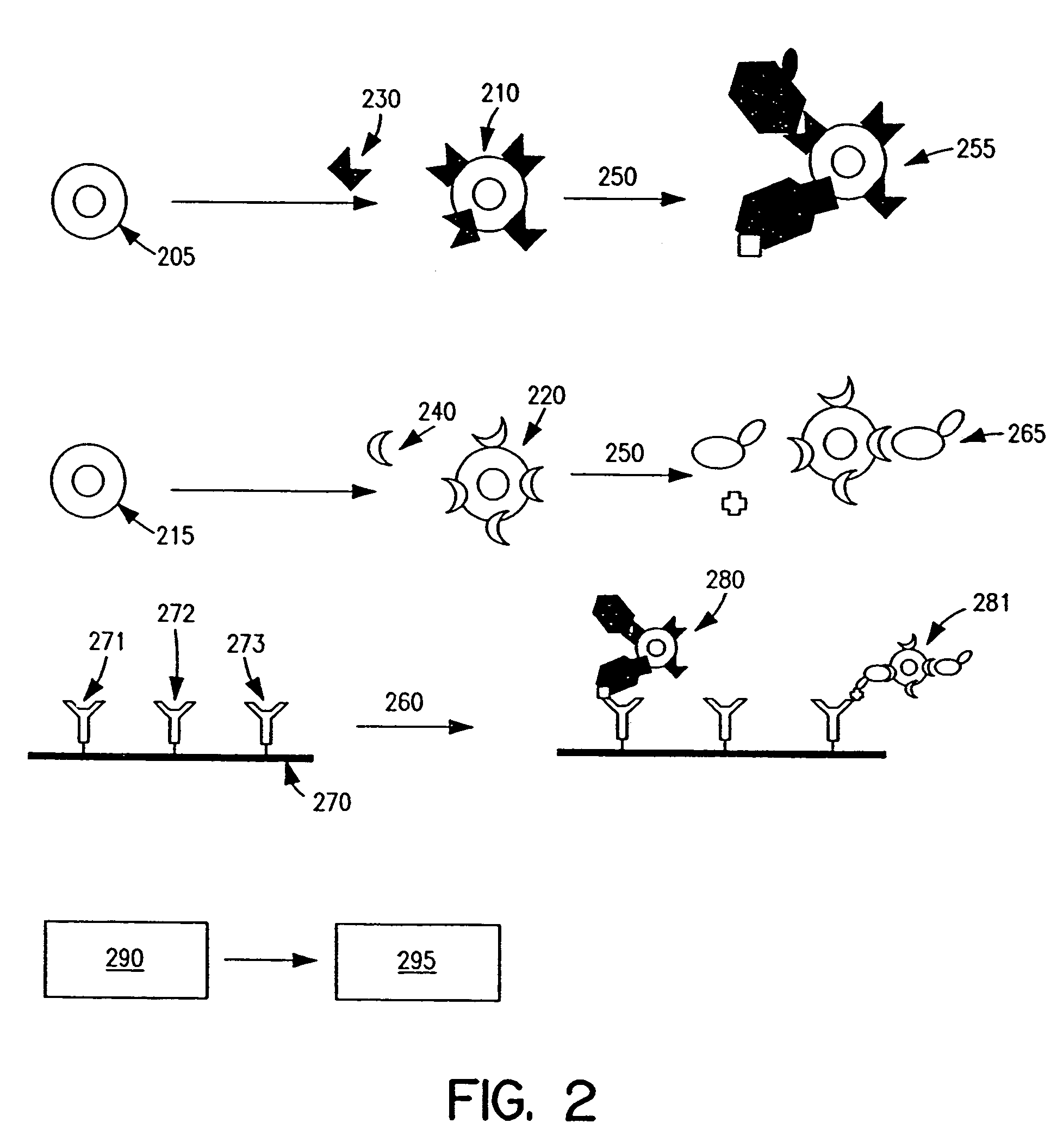Cellular analysis using Raman surface scanning
a raman surface and raman technology, applied in the field of biomolecule analysis methods using nanoparticles, can solve the problems that none of the foregoing techniques is well suited for quantitative measurements, and sers have not gained widespread us
- Summary
- Abstract
- Description
- Claims
- Application Information
AI Technical Summary
Benefits of technology
Problems solved by technology
Method used
Image
Examples
example 1
[0151]Antibody-COIN conjugation: To conjugate COIN particles with antibodies, a direct adsorption method was used. A 500 μL solution containing 2 ng of a biotinylated anti-human IL-2 (anti-IL-2), or IL-8 antibody (anti-IL-8), in 1 mM Na3Citrate (pH 9) was mixed with 500 μL of a COIN solution (using 8-aza-adenine or N-benzoyl-adenine as the Raman label). The resulting solution was incubated at room temperature for 1 hour, followed by adding 100 μL of PEG-400 (polyethylene glycol 400). The solution was incubated at room temperature for another 30 min before a 200 μL of 1% TWEEN-20 detergent was added. The resulting solution was centrifuged at 2000×g for 10 min. After removing the supernatant, the pellet was resuspended in 1 mL solution (BSAT) containing 0.5% BSA, 0.1% TWEEN-20™ detergent and 1 mM Na3Citrate. The solution was again centrifuged at 1000×g for 10 min to remove the supernatant. The BSAT washing procedure was repeated for a total of 3 times. The final pellet was resuspended...
PUM
| Property | Measurement | Unit |
|---|---|---|
| half peak width | aaaaa | aaaaa |
| sizes | aaaaa | aaaaa |
| size | aaaaa | aaaaa |
Abstract
Description
Claims
Application Information
 Login to View More
Login to View More - R&D
- Intellectual Property
- Life Sciences
- Materials
- Tech Scout
- Unparalleled Data Quality
- Higher Quality Content
- 60% Fewer Hallucinations
Browse by: Latest US Patents, China's latest patents, Technical Efficacy Thesaurus, Application Domain, Technology Topic, Popular Technical Reports.
© 2025 PatSnap. All rights reserved.Legal|Privacy policy|Modern Slavery Act Transparency Statement|Sitemap|About US| Contact US: help@patsnap.com



